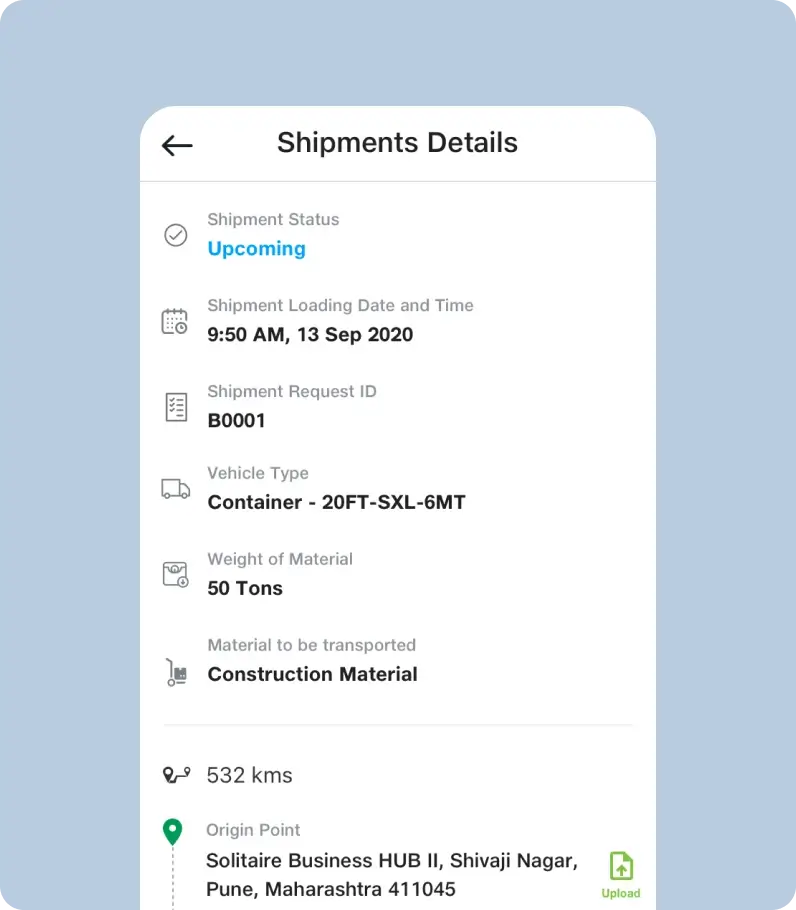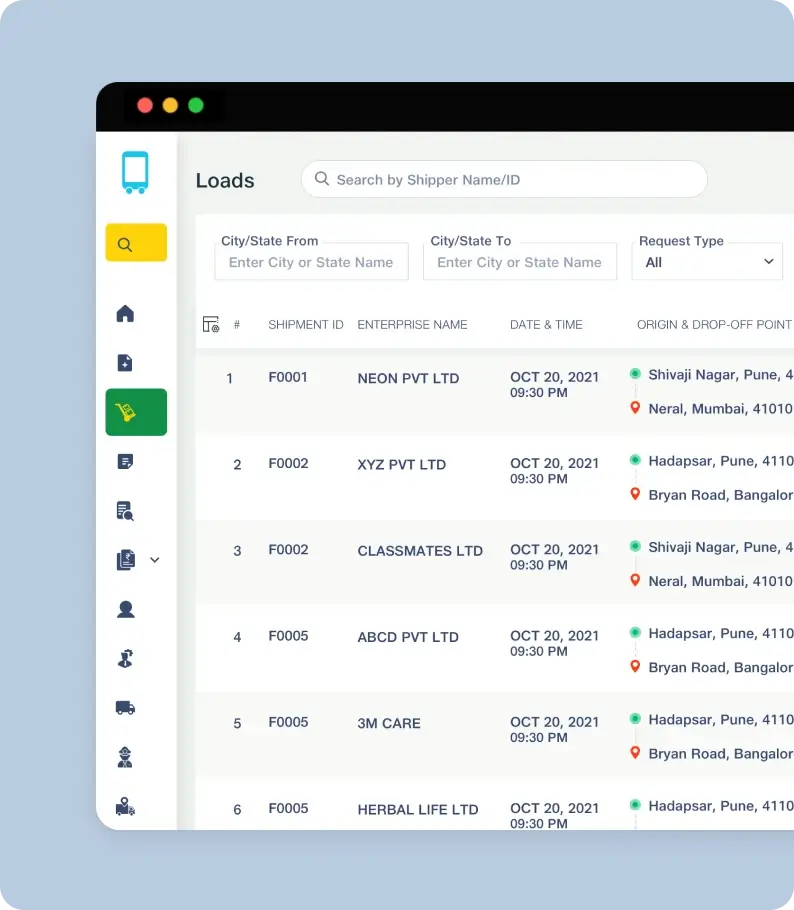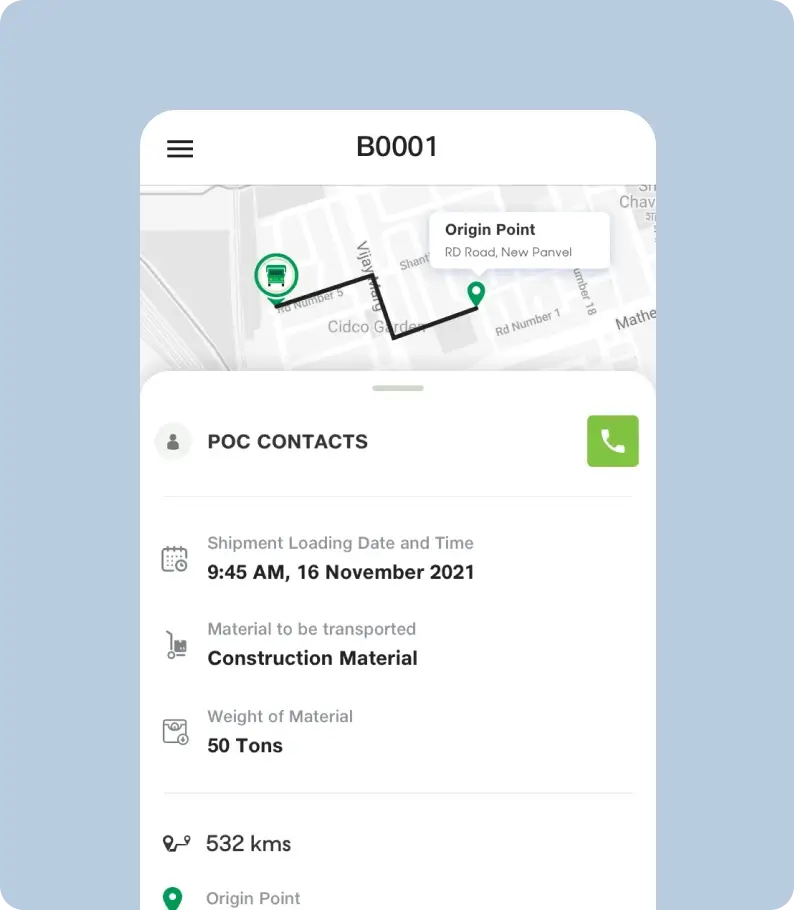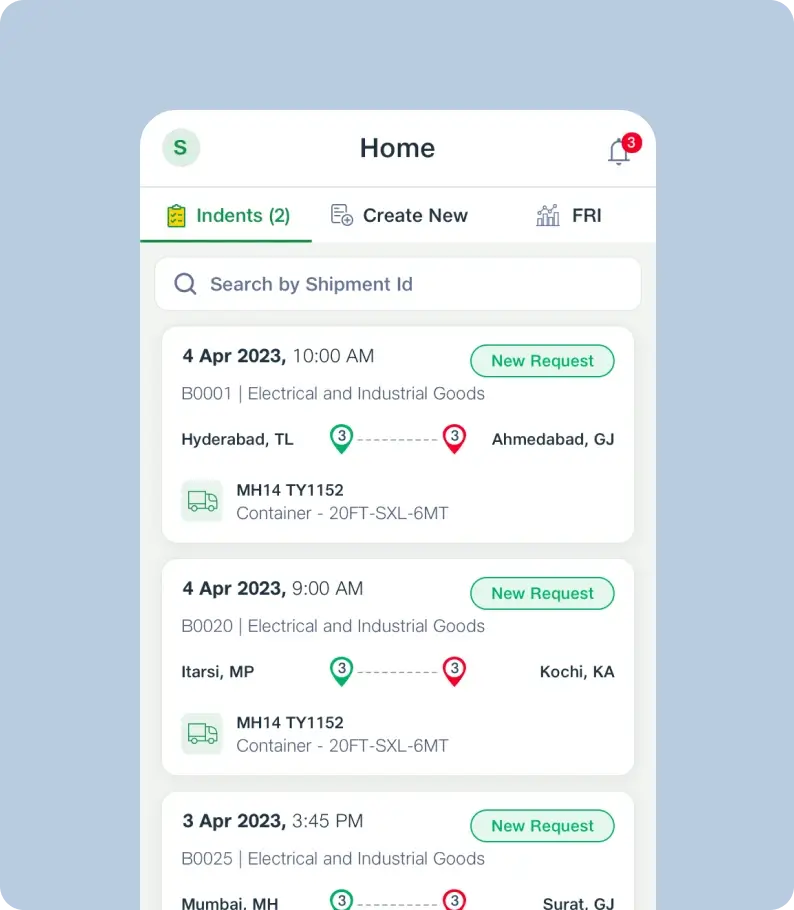The logistics and supply chain industry plays a pivotal role in global commerce, ensuring goods reach their destinations efficiently and on time. However, traditional freight matching is manual, time-consuming, and often inefficient. Shippers and Transporters often struggle to find optimal matches for freight, resulting in underutilized truck capacity, delays, and increased operational expenses. Amidst increasing digital transformation, leveraging the emerging technologies and digital solutions like the Digital Freight Marketplace and Truck Load Matching Platform can help logistics companies make their operations more efficient and ultimately improve their bottom line.
One of our clients envisioned simplifying the process of matching freight with available carriers using a Load Matching Platform, designed to automate workflows and improve communication throughout the freight logistics ecosystem. This case study presents how they embraced advanced technologies and tools to connect Shippers and Transporters seamlessly.
Our client is a forward-thinking logistics company in India with a vast network of Shippers, Transporters, other key players, diverse customers, and a wide range of vehicles. The client is committed to providing an unmatched experience to all stakeholders through load matching and fleet management services. As their business expanded further, they started experiencing significant operational challenges related to load booking and truck utilization. In response, they sought to fully optimize their logistics operations with a custom load matching platform.
The growing Indian logistics company has an expansive network of shippers, carriers, and other industry players, making it difficult to efficiently match available truck capacity with the varying demands of its customers. The manual truckload booking processes led to inefficiencies, empty truck runs, increased operational costs, and other key issues -
Time-consuming manual process of matching available trucks with freight often resulted in underutilized truck loadings or delayed shipments.
Lack of visibility to the status and location of shipments caused communication gaps and hindered real-time location tracking & decision-making.
Traditional methods resulted in underutilized truck capacity, increasing operational expenses, and unaccounted overheads.
Intermediaries like Freight Promoters introduced additional costs and complexities, making it challenging for Shippers and Transporters to maintain control over their shipments.
Extensive paperwork for tasks like generating bills of lading and handling invoices not only consumed more time and increased administrative costs but also resulted in delays due to traditional methods of LR & POD document verifications.
Lack of adequate tools and resources needed to accommodate the growing demands of the logistics industry.

A purpose-built freight matching platform solution was designed to support the company’s Pan India logistics operations, optimizing physical and digital capabilities. With a range of customized capabilities and configurable options, our team proposed and developed a bespoke truck load matching platform with comprehensive business process support and Shipperm Transporter, Driver, and Vehicle Management capabilities. It was bundled with track and trace technology to allow shippers simplified yet real time tracking of their shipments enabling them to manage the logistical documentation and financial transactions digitally at the tip of their fingers.
The truckload matching platform was equipped with features such as AI-based price setting and demand aggregation, route optimization, demand and supply management capabilities, and digital invoicing process. In addition to the core transportation service, the platform also facilitated ancillary service support to fleet owners through a host of value-added features like fuel, FASTag, telematics, lubes, etc. to make it a one-stop-shop for all their logistical needs.
The platform was designed to meet the varied needs of all stakeholders and was equipped with a range of features, as outlined below:

It allowed transporters to view assigned loads, place bids, manage driver and vehicle information, oversee invoices, and simplify fuel and payment management through an integrated wallet, enhancing financial efficiency.

The Load Matching Platform for Admin had user access management, master data management for load details, stakeholder management, document control, payment management, query resolution, user roles, and permissions, and reporting, ensuring an efficient and well-organized logistics process.

This app empowered drivers with tools for efficient trip execution, facilitating real-time updates on trip status and delivery progress, and streamlining their logistical responsibilities.

The app simplified shipment transportation by allowing shippers to post requests, track real-time request status, and manage invoices, streamlining their logistics operations and fostering efficient freight management.
The technical implementations of the load matching platform involved the use of modern technologies and tools such as -
Hosted the solution on a robust cloud infrastructure to ensure scalability and high availability taking into consideration 99.99% uptime, BCP, and DR. End-to-end CI-CD automation for seamless releases.
Created a sophisticated ML-powered algorithm for load matching, considering various factors like size, weight, distance, price, route, and real-time truck availability and improving accuracy over time.
Enforced stringent security measures to protect sensitive shipment data and ensure compliance with GDPR and further insured with a sign-off from the Security Vendor for the VAPT audit.
We have implemented a 3-tier traceability process that enables robust real-time tracking with Telematics, Mobile app, and Sim-driven shipment tracking and informed decision-making.
Integration with FasTag has opened the gates for added revenue generation. With in-house Fuel integration, the expansion of sales has evolved substantially enabling purchases of Fuel and Lubes which have an expense share of 40% for each shipment.
Used data analytics tools and techniques to extract actionable insights from the massive volume of logistics data for robust reporting, forecasting, and decision-making.
Optimizing logistics operations with an exclusive load matching platform enabled the client to gain real-time visibility and the status of all stakeholders and vehicles. The automated load matching algorithm reduced the time required to find suitable matches, enabling faster cargo dispatch and optimized truck capacity utilization. It helped the company enhance freight management. Operational expenses saw a significant reduction due to transformed processes and the automation of paperwork. Real-time tracking and communication fostered transparency and trust between shippers and carriers. This, in turn, led to better decision-making, enhanced customer satisfaction, and delivered an unmatchable logistics experience to all stakeholders.